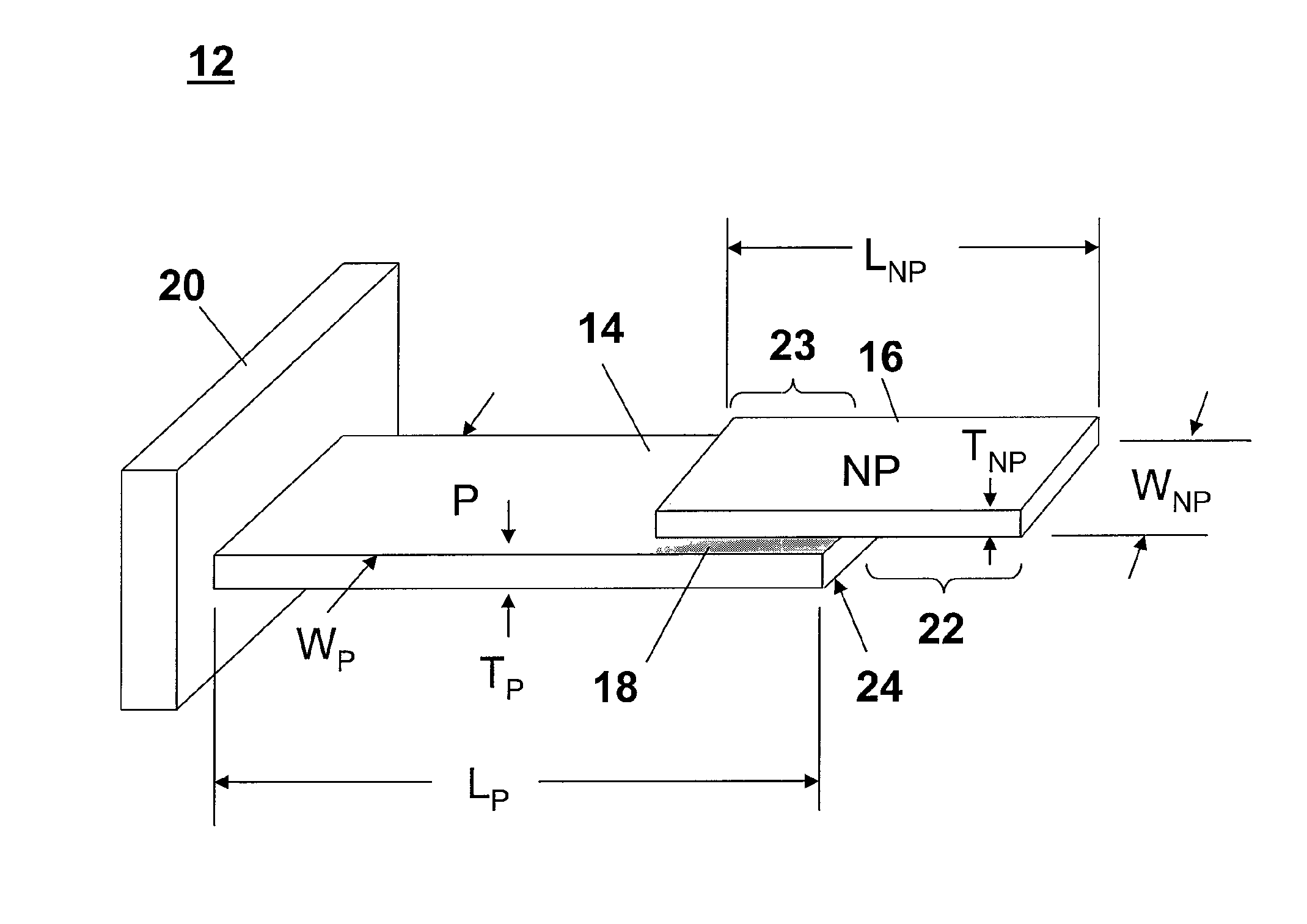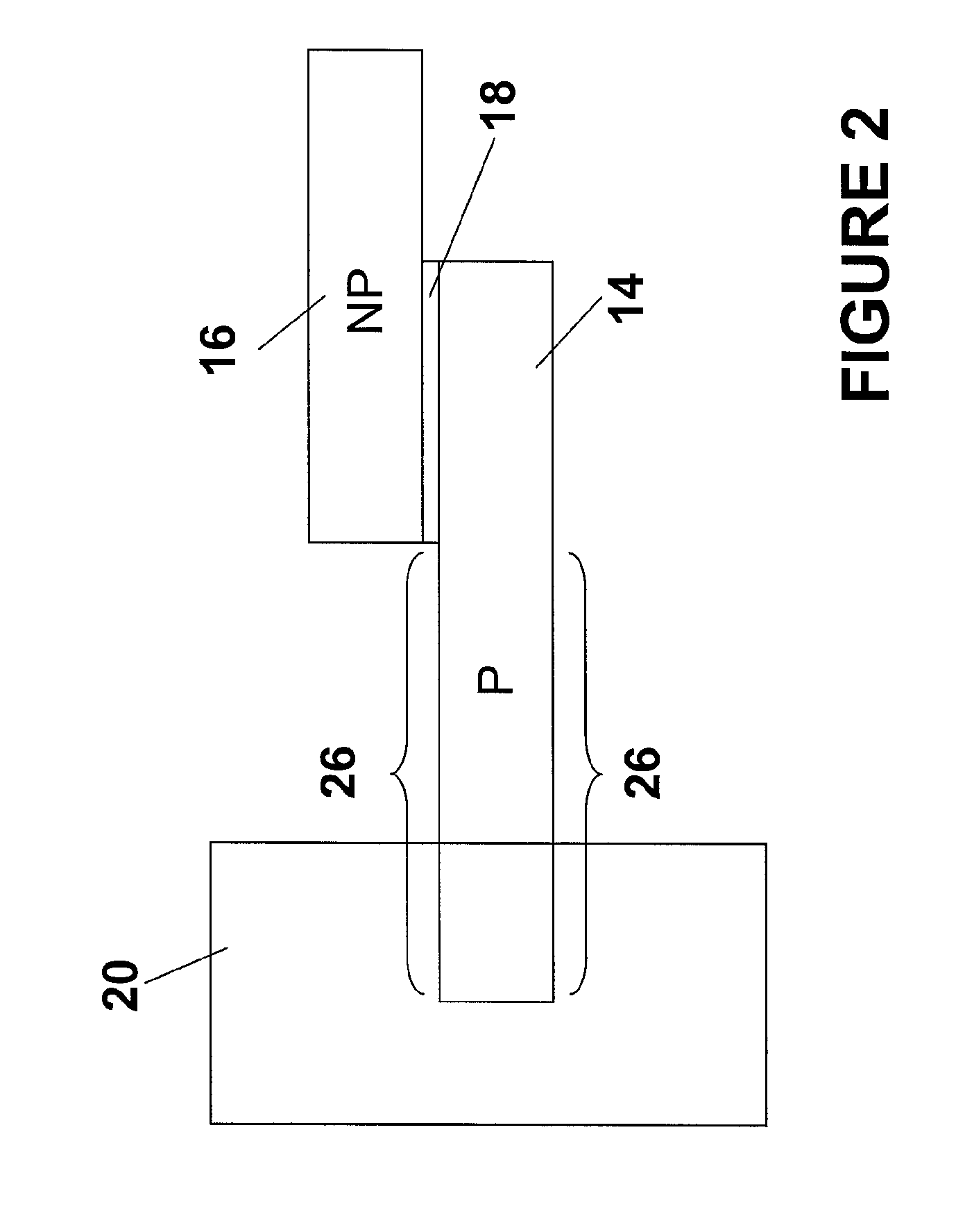Self-exciting, self-sensing piezoelectric cantilever sensor
a piezoelectric, self-sensing technology, applied in the field of sensors, can solve the problems of liquid dampening, affecting sensitivity, and limiting the bending of the cantilever arm,
- Summary
- Abstract
- Description
- Claims
- Application Information
AI Technical Summary
Problems solved by technology
Method used
Image
Examples
Embodiment Construction
[0027]A self-exciting, self-sensing piezoelectric cantilever sensor as described herein provides the ability to detect and measure extremely small amounts of an analyte. The self-exciting, self-sensing piezoelectric cantilever sensor can be utilized to detect and measure an analyte immersed in a liquid and an analyte contained in a gas or vacuum. In various example configurations, the self-exciting, self-sensing piezoelectric cantilever sensor comprises at least one piezoelectric layer and at least one non-piezoelectric layer, wherein the piezoelectric layer is coupled to the non-piezoelectric layer such that the piezoelectric layer and the non-piezoelectric layer are not coextensive. The piezoelectric layer, the non-piezoelectric layer, or both can be coupled to at least one base. The piezoelectric layer and the non-piezoelectric layer can be of varying widths, lengths, and thicknesses.
[0028]The self-exciting, self-sensing piezoelectric cantilever sensor is utilizable to determine ...
PUM
 Login to View More
Login to View More Abstract
Description
Claims
Application Information
 Login to View More
Login to View More - R&D
- Intellectual Property
- Life Sciences
- Materials
- Tech Scout
- Unparalleled Data Quality
- Higher Quality Content
- 60% Fewer Hallucinations
Browse by: Latest US Patents, China's latest patents, Technical Efficacy Thesaurus, Application Domain, Technology Topic, Popular Technical Reports.
© 2025 PatSnap. All rights reserved.Legal|Privacy policy|Modern Slavery Act Transparency Statement|Sitemap|About US| Contact US: help@patsnap.com



